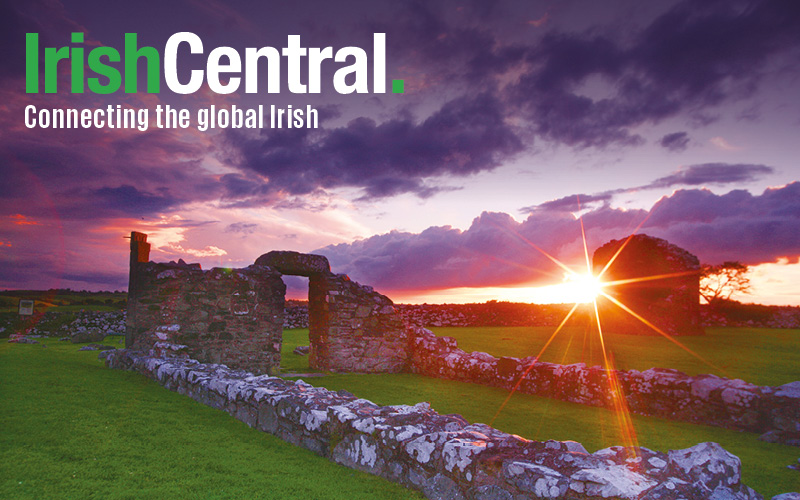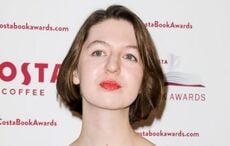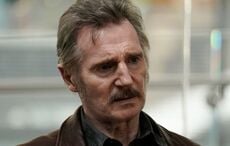In Havana Nocturne Irish American author T.J. English tells the riveting tale of the Mob in Cuba. It features a heady brew of organized crime lords, political corruption, world famous nightlife and international conflict. CAHIR O'DOHERTY talks to the author about the nation and his new book.
BY the mid 1950s the Havana Mob comprised some of the most notorious American underworld figures of their day. Legendary gangsters like Charles "Lucky" Luciano, Meyer Lansky, Santo Trafficante, and others had come to Havana in the late 1940's and early 50's seeking criminal opportunities.
These were men who had honed their craft or amassed their wealth in the "glory days" of Prohibition in the U.S., and who had always dreamed of controlling their own country. A fascination with Cuba and the criminal underworld might seem like an odd fit for Tom English, 50, the son of a large Irish Catholic family of 10 brothers and sisters from Tacoma, Washington. But early in his writing career, English worked as a freelance journalist in New York City (for the Irish Voice and Irish America magazine) during the day and drove a taxi at night.
He now refers to cab driving as a metaphor for what he does as a writer - "interviewing strangers, exploring the unknown, reporting on what he sees and hears from his sojourns in and around the underworld."
In the 1990's while working as a reporter for the Irish Voice covering the Westies, the-last-of-their-kind New York based Irish American criminal gang, he became known as a crime author. His book The Westies was a bestseller and a movie, State of Grace, starring Sean Penn followed, as did a stint as a writer on NYPD Blue. Then came a book on Vietnam gangs in New York.
In all his books English has always had a poet's ear for nuance and irony, which serves him well again in Havana Nocturne, an almost surreal tale of wildly competing interests.
Havana, Cuba became the Mafia Shangri-la, a place where they provided the gambling, narcotics, booze, prostitution and every other form of vice free from government interference or threat of law enforcement.
By the mid 1950s Havana had became the dark side of the American Dream, a sparkling playground built on fear, exploitation and greed, and in the fondest dreams of the Mob who ran it, a potential stepping stone to a global enterprise.
But running in tandem with the mob's ambitions, a radical political group was determined to write a much different destiny for Cuba - a destiny completely at odds with the bloated gambling dens and show palaces of the criminal classes. From the beginning a dramatic showdown was inevitable between the double-breasted mob bosses and the small but surprisingly effective inland band of guerilla fighters led by a charismatic former lawyer and political candidate named Fidel Castro.
As English argues in his authoritative study, it's impossible to tell the story of the Havana Mob without also chronicling the rise of Castro and the revolution he founded. It is also surprising to note that until English's new book it has not been comprehensively done.
The fact is that Castro's struggle found its focus in opposition to the criminality and exploitation of the mob run city, and the political regime that they claimed was in its pocket. Although English carefully points out that it's not accurate to say that the mobsters were the chief reason for the Revolution, it's true to say they became a powerful symbol of the national corruption and exploitation Castro's uprising vowed to change.
The tense standoff between the two opposing groups often led to completely surreal moments - the mob responded to violent popular protests, for example, by building even more casinos and hotels and inviting more movie stars to perform. They seemed to be suggesting that style (so to speak) could triumph over substance. They threw truckloads of money at the their problems, but never at their roots.
As English notes in his book, what happened next changed the history of both Cuba and the U.S. It's impossible, he argues in Havana Nocturne, to understand the present day stand-off between the governments of Cuba and the U.S. without first knowing the details of this deeply conflicted era.
For English, right from the start, the logistical difficulties of writing Havana Nocturne stemmed from the decades long face down and continuing embargo between the two nations.
"I went there legally," he says "I got a special license from the U.S. Treasury Department. But my first application was rejected. You have to explain what your research is and what the theme of your research is.
"I had written I was researching the role of the mob to the Batista government in the 1950s. When that was rejected I thought maybe there's something wrong with the politics of this application. So I rewrote it. The only thing I changed was I'm researching whether the mob funneled guns and money to the Revolution. It came back approved."
Finding the right political formula for each nation also came in handy going through Cuban customs.
"I happened to arrive in Cuba in a really difficult time. Fidel has just gone into hospital. This was July of 2006. Cuba was in lockdown. Friends were telling me you're not going to get in," English recalls.
"But I told them the truth; I was there to research the mafia subject. And they're quite proud they chased the mob out so they were predisposed to let me in. I had packed the collected works of Jose Marti, the great poet revered by Castro and the Revolution.
"When the customs guys saw it his whole demeanor changed. It was a tremendous weight had been lifted from both our shoulders. I'm sure that book was the good omen that got me in there."
It's difficult now to appreciate the appeal and excess of Havana in it's heyday. For some it was a non-stop glamorous party, for many others it was an era of corruption and excess to which they were not invited. But for America's political class it exuded a strange fascination, and some will be surprised to learn of the visitors who made the trip.
As English notes in the book, Jack Kennedy went to Havana for the first time as the senator from Massachusetts in the December of 1957, where his traveling companion Senator George Smathers of Florida (who died last year at the age of 93) introduced him to the two co-leaders of the Havana mob, Meyer Lansky and Santo Trafficante.
One of the attractions of Cuba in the 1950s for a young senator was that you could wine and dine with such people, and it all was outside the scope of the American media and American law enforcement. That was one of the attractions of Havana - what happened there, stayed there.
Says English, "It was a junket for business people and politicians who would go down there and would dabble in the sexual marketplace and the nightlife down there. They'd perhaps do things they wouldn't do back home."
According to English, Trafficante got a sense that Jack Kennedy had a keen taste for the ladies, and so he set up a tryst between Kennedy and three prostitutes in a very upscale neighborhood in Havana at the Hotel Commodoro, which still exists there, frozen in time.
They set him up in a room with a two way mirror - which Kennedy didn't know - and the story goes Trafficante and an associate of his watched the tryst take place but didn't photograph it. Trafficante later kicked himself, English explains, because it would have made terrific blackmail material.
Says English, "It's an interesting incident because it explains the animosity that the mob felt toward the Kennedys in later years when Jack Kennedy was elected president. When he appointed Bobby Kennedy attorney general, Bobby continued his vendetta against the mob that he had started earlier, and it angered them no end. The theory being that that's part of the blowback that led to the Kennedy assassination."
It's also a stark reminder that although, as English says, "the sound of the shot machines and the intoxicating rhythm of the mambo linger on" the standoff between the two competing legacies has endured, and neither side has shown any indication of forgiving or forgetting.




Comments